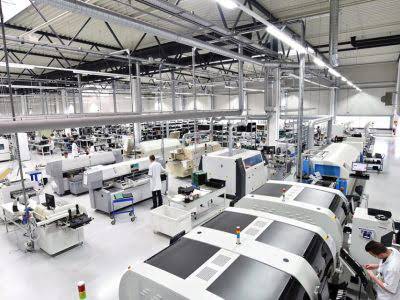In the variable expense equation, the variable expense is a dependent variable—internal and external factors are independent variables. Here, internal and external factors refer to components like production scale, workforce, socio-political environment, etc. Every production unit employs a workforce; the workers are compensated using varying remuneration structures.
Variable Costs Vs Fixed Costs
You should strive to keep variable cost per unit as low as possible since this will result examples of variable costs in more profit per unit. But if your total variable costs are rising, you are producing more units—hopefully at a net profit. Yes, your total variable costs will increase as you produce more units.
Strategies they use and the impact on profitability
- They analyze the unique requirements of different clients and tailor their service offerings accordingly.
- Lastly, variable cost analysis is useful when determining your company’s expense structure.
- Understanding your variable costs is essential for small and mid-sized businesses.
- However, the cost cut should not affect product or service quality as this would damage sales.
- Therefore, total variable costs can be calculated by multiplying the total quantity of output by the unit variable cost.
- These costs fluctuate with production levels, impacting the basic budget.
Sustainable supply chain practices can result in more cost-effective and resilient sourcing methods. C&H Manufacturing Company maintains strong relationships with its suppliers and engages in proactive negotiations to secure favorable terms. They consolidate purchases and negotiate volume-based discounts on raw materials, ensuring cost-effectiveness in their supply chain. This fosters cost efficiency, allowing businesses to produce more at reduced expenses, ultimately enhancing competitiveness. In the intricate realm of business operations, understanding the concept of Variable Cost is paramount to achieving sustainable success. As you delve into the world of enterprise economics, you’ll quickly realize that not all costs are created equal.
Maintenance costs are a good example; maintenance is essential but can be delayed if there’s a cash crunch. A company in such a case will need to evaluate why it cannot achieve economies of scale. In economies of scale, variable costs as a percentage of overall cost per unit decrease as the scale of production ramps up. Every dollar of contribution margin goes directly to paying for fixed costs; once all fixed costs have been paid for, every dollar of contribution margin contributes to profit. Variable costs are a direct input in the calculation of contribution margin, the amount of proceeds a company collects after using sale proceeds to cover variable costs. Even fixed costs can change over time, but the change will not be related to production.
Future Trends and Considerations in Variable Cost Management
There is also a category of costs that falls between fixed and variable costs, known as semi-variable costs (sometimes called semi-fixed costs or mixed costs). These are costs composed of a mixture of fixed and variable components. Costs are fixed for a set level of production or consumption and become variable after this production level is exceeded. Regular salaries of permanent employees are fixed costs, while overtime wages or contract labor expenses may be considered variable costs.
- Where average variable cost is most useful, however, is when you’re trying to calculate your average costs while accounting for multiple products with different variable costs per unit.
- In the intricate realm of business operations, understanding the concept of Variable Cost is paramount to achieving sustainable success.
- It is the opposite of fixed costs, which remain constant irrespective of production levels.
- This formula demonstrates that total variable cost fluctuates based on the number of units produced, while variable cost per unit remains constant.
- This example illustrates the role that costs play in decision-making.
For example, the salary of a sales executive with a fixed component and a variable component (target-based bonuses) represents a mixed expense. Mixed costs, or “semi-variable costs”, as their name suggests, are made up of a variable part and a fixed part. These are costs charged to the company, regardless of its sales or production volume. The amount of variable costs is used to define the margin on variable costs.
How do variable costs impact profit margins?
In general, it can often be specifically calculated as the sum of the types of variable costs. Variable costs may need to be allocated across goods if they are incurred in batches (i.e. 100 pounds of raw materials are purchased to manufacture 10,000 finished goods). Streamlining production processes reduces raw material waste, minimizes idle time, and optimizes labor usage, all of which can lead to significant cost savings in variable expenses. If demand decreases, a business can scale down production to reduce variable costs and prevent unnecessary expenses. Conversely, during periods of high demand, a company can expand its operations to capitalize on opportunities for increased revenue. When production increases, variable costs will rise proportionately and vice versa.
Relationship between Variable Costs and Production Volume
By fostering a collaborative and innovative environment, you unlock the potential for significant variable cost reductions. Such insights enable businesses to identify which products or services contribute most significantly to their bottom line and make informed decisions on resource allocation and investment. Of course, you don’t want to charge too much and risk losing business to better-priced competition. Using the variable cost formula will help you find the sweet spot between charging too much and too little, ensuring profitability for your business. Notice how the total variable cost goes up according to the number of contracts, much like in the previous example. Excel enables easy sensitivity analysis by changing unit assumptions.
In general, companies with a high proportion of variable costs relative to fixed costs are considered to be less volatile, as their profits are more dependent on the success of their sales. In most organizations, the bulk of all expenses are fixed costs, and represent the overhead that an organization must incur to operate on a daily basis. Fixed costs must be incurred, no matter what the activity level of the entity may be, while variable costs are only incurred if there is some amount of activity. A further reason why variable costs are important is that they are a prime determinant in calculating the contribution margin of a product. Contribution margin is calculated as the net sale price of a product, minus all variable costs.
However, some companies use machine hours as a basis for allocating overhead costs, making them indirect variable costs. C&H Manufacturing Company stays at the forefront of technology adoption by integrating automation into its production processes. Automated machinery enhances production efficiency, reduces errors, and minimizes labor costs. The company also invests in data analytics tools to monitor and analyze production data, identifying opportunities for cost optimization. Understanding these distinctions enables business owners to make better financial decisions and optimize cost management strategies for enhanced profitability.
Wood is considered a variable cost because the price of it can change over time. As the production output of cakes increases, the bakery’s variable costs also increase. When the bakery does not bake any cake, its variable costs drop to zero. The total expenses incurred by any business consist of variable and fixed costs. Variable costs are expenses that vary in proportion to the volume of goods or services that a business produces.
Usually, this is witnessed in mass production—costs are fixed to a specific production level. However, manufacturers incur variable expenses if they increase production beyond that level. Since fixed costs are more challenging to bring down (for example, reducing rent may entail moving to a cheaper location), most businesses seek to reduce their variable costs.
Variable costs increase with higher production levels and decrease with lower production levels. Managing these factors diligently allows companies to boost margins by reducing variable cost per unit. Below is an extract from a budgeting exercise in our Finance for the Non-Finance Manager. You can see the VC per unit in Column E. For budgeting profit, we just estimate the Sales volume (2000 units) and put the (shown) formula against each variable cost input. Sometimes, there is a sudden fall in the availability of labor—production cannot be stopped—wages hike overnight.







